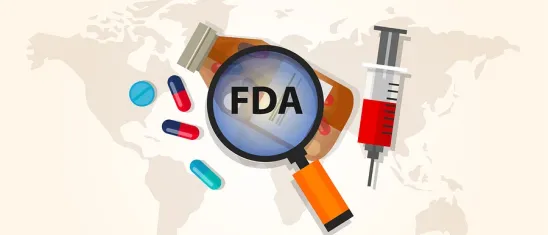On July 18, 2018, after months of alluding to the various aspects of an upcoming “Biosimilar Action Plan” as another prong within FDA’s broader Drug Competition Action Plan (DCAP), FDA finally unveiled its plan for stimulating and improving the marketplace for biosimilars in the U.S. The newly released Biosimilar Action Plan(BAP) is a 9-page, easy-to-read document. As Commissioner Gottlieb indicated in his statement about the release, the BAP is “is aimed at promoting competition and affordability across the market for biologics and biosimilar products.”
As we’ve previously discussed on this blog (see here, here, and here), the Food and Drug Administration under Commissioner Scott Gottlieb has been at the forefront of efforts to “Tackle Drug Competition to Improve Patient Access” – as per a June 27, 2017 FDA press release related to Dr. Gottlieb’s multi-pronged DCAP. In the absence of direct authority over pricing-related issues, as the Commissioner regularly mentions in his public appearances, Dr. Gottlieb and his leadership team nonetheless have demonstrated creativity and commitment towards improving various FDA-related bottlenecks for drugs and biologics – for players in both the innovator and follow-on product environments.
The BAP begins by summarizing the tension between the different statutory mandates that apply to new drugs/biologics and to the follow-on drug/biosimilar products that are intended to increase patients’ access to those medical advances. The BAP goes on to address the Agency’s obligations to ensure the continued viability of the “virtuous cycle of innovation and competition.”
The July 18th BAP is focused on four key areas:
- improving efficiency of the product development and approval process;
- maximizing scientific and regulatory clarity;
- developing effective communications aimed at improving understanding of biosimilars; and
- supporting market competition, notably by “reducing gaming of FDA requirements or other attempts to unfairly delay competition.”
Although these four key areas can be viewed as representing existing FDA initiatives, both under the DCAP and under ongoing educational efforts specific to biosimilars, responses to the Biosimilar Action Plan generally have been positive. Biosimilar stakeholders appear be to encouraged by the high-profile nature of the BAP roll-out and the message it sends to the public and policymakers that patient access and reducing costs are being amplified by Dr. Gottlieb with FDA’s overall mandate.
“Priority Deliverables” under BAP Likely to Be the Primary Driver of Reforms…
The BAP also lays out a series of specific “priority deliverables” in each of the four key areas.
First, to improve efficiency of the review process, one of the priority deliverables is the development of specific templates for 351(k) Biologics License Applications (aBLAs, used for biosimilar biological products). The templates would be aimed at streamlining the review process and enhancing public information about the FDA’s evaluation of biosimilar and interchangeable products. Another deliverable under this key area is the development of more information resources and tools “that can assist biosimilar sponsors in developing high quality biosimilar and interchangeable products using state of the art techniques.” A specific example given in the BAP is the development of an “index of critical quality attributes for use in comparing proposed biosimilars to certain reference products.” The objective of such a resource would be to clarify how the FDA evaluates data from comparative analytical studies that are used to support a showing of “biosimilarity” to the reference product.
Second, there are several priority deliverables under the goal of maximizing scientific and regulatory clarity. The strategic deliverables for this key objective include developing an enhanced Purple Book that will include more information about approved products (all parties frequently lament how thin the current Purple Book is), and “supporting a global market for biosimilars” by harmonizing international requirements for product development and sharing regulatory experience. For example, the latter could include strengthening FDA partnerships with regulatory authorities in Europe, Japan, and Canada through specific initiatives such as data sharing agreements. In some cases, the BAP suggests, it also may be appropriate to use a non-U.S. licensed comparator product to support a new 351(k) aBLA application.
As we previously noted, the BAP was expected to at least include changes to the Draft Guidance on Demonstrating Interchangeability that was issued in January 2017, in the waning days of the Obama Administration. And although the release of the BAP did not coincide with the release of revisions to that guidance document, the reference to use of a non-U.S. comparator stems specifically from industry comments on the Draft Guidance on Interchangeability. Accordingly, also included among the deliverables is the development of final or revised guidance on demonstrating interchangeability with a reference product, as well as a number of other important topics to developers of both biosimilars and reference products, such as the guidance on Reference Product Exclusivity and the so-called “deemed to be a license” provision in the law that created the 351(k) biosimilar pathway. On this point, it is worth noting that FDA had already committed to issue many of those guidance documents as part of its commitments to regulated industry under the Biosimilar User Fee Act reauthorization enacted by Congress in 2017.
Third, in the area of developing effective communications to improve understanding of biologics, the BPA highlights a number of educational and outreach campaigns already undertaken by the FDA and notes that they will be expanded.
Finally, in the area of supporting market competition – long a target of Commissioner Gottlieb who has famously called out “gaming” and “shenanigans” by companies seeking to block competition from follow-on products – the priority deliverables include clarifying the FDA’s position on issues affecting reference product exclusivity. The BAP also promises that the Agency “will take action, whenever necessary, to reduce gaming of current FDA requirements, and coordinate with the Federal Trade Commission to address anti-competitive behavior” as well as working with legislators “to close any loopholes that may effectively delay biosimilar competition beyond the exclusivity envisioned by Congress.”
…And Biosimilar Actions Are Going to Pick Up Across the Board
Dr. Gottlieb spoke at a think tank event in conjunction with the public release of the BAP, and his prepared remarks were also posted on the Agency website. Notably, he discussed many of the payment and reimbursement pressures on biological products, issues not within FDA’s purview, opining that: “An ideal system would reimburse biologics in a competitively bid scheme, where we could take full advantage of the multi-source competition.” The Commissioner also made news by calling competition in the current biosimilar market “anemic” and referring to the current situation as “Groundhog Day” in which the same story is being played out for biologics following the script used in the 1980s for generic drugs following enactment of the Hatch-Waxman Act. His remarks were forceful and direct. We should expect significant follow-through by the Trump Administration in general on Commissioner Gottlieb’s promises, and by the FDA in particular within the context of the BAP and the broader DCAP.
Previously, on June 18, 2018, FDA released a finalized version of a 2016 draft guidance on Labeling for Biosimilar Products (we blogged about the draft version here). The most significant request from the biosimilar industry in response to the draft policy was that FDA not require the inclusion of a “biosimilarity statement” as part of the prescriber labeling. The Final Guidance on Labeling for Biosimilar Products does not change course on this requirement. As Dr. Gottlieb noted in his remarks, “The FDA wants to make sure that biosimilar products have labeling that allows health care practitioners to make informed prescribing decisions for their patients,” and ensuring that those prescribers know that a product has been approved via an aBLA (as compared to a full BLA required for non-biosimilar products) is an important piece of that goal.
In the coming weeks, we will be further analyzing the components of the BAP and related Agency activities related to enhancing competition in the marketplace for biosimilars and biologics. And we’ll be keeping track of new guidance documents, a state-of-the-art Purple Book, and other pieces of this biosimilar plan as they are released. Stay tuned for more!





 />i
/>i

